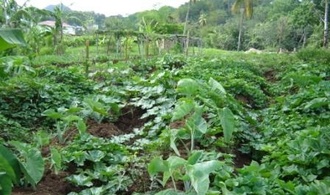The many benefits of biodiversity
Written by Modified on the
For the last 20 years, the international community has been working to halt biodiversity loss and thus maintain the benefits it provides to human activities, especially agricultural systems. These benefits range from soil fertility to carbon storage, through pollination and pest control.But there are aspects of biodiversity which need to be controlled. These include competing crops, pests, parasites and pathogens that attack plants and animals and spread disease or weeds.So how can we reconcile biodiversity and agricultural production while ensuring the economic viability of farms?Historically, agriculture has obtained its plants and animals from the natural environment. They were selected and domesticated. The species or varieties were chosen due to their adaptation to different environmental conditions. Currently, however, according to the FAO, only 30 crop species cover 95 percent of human food requirements and four of them (rice, wheat, maize and potato), over 60 percent. The causes of biodiversity loss include the replacement of local varieties by modern, commercial varieties which are genetically less diverse. Maintaining diversity among species and within species is nevertheless crucial for the future of agriculture, which is vulnerable to climate change. A genetically poor species will have more difficulty adapting to changing environmental conditions such as heat and drought and will have less resistance to pests and diseases.Solutions to reconcile biodiversity and agriculture, natural techniques which bolster soil biodiversity (i.e. stubble, fallow, organic fertilizers), the reintroduction of pollinators such as bees, beneficial insects like ladybirds, natural crop allies. This, a reduction of pesticides is achieved while promoting the use of underutilized vegetable, fruit and agro-forestry crops.


